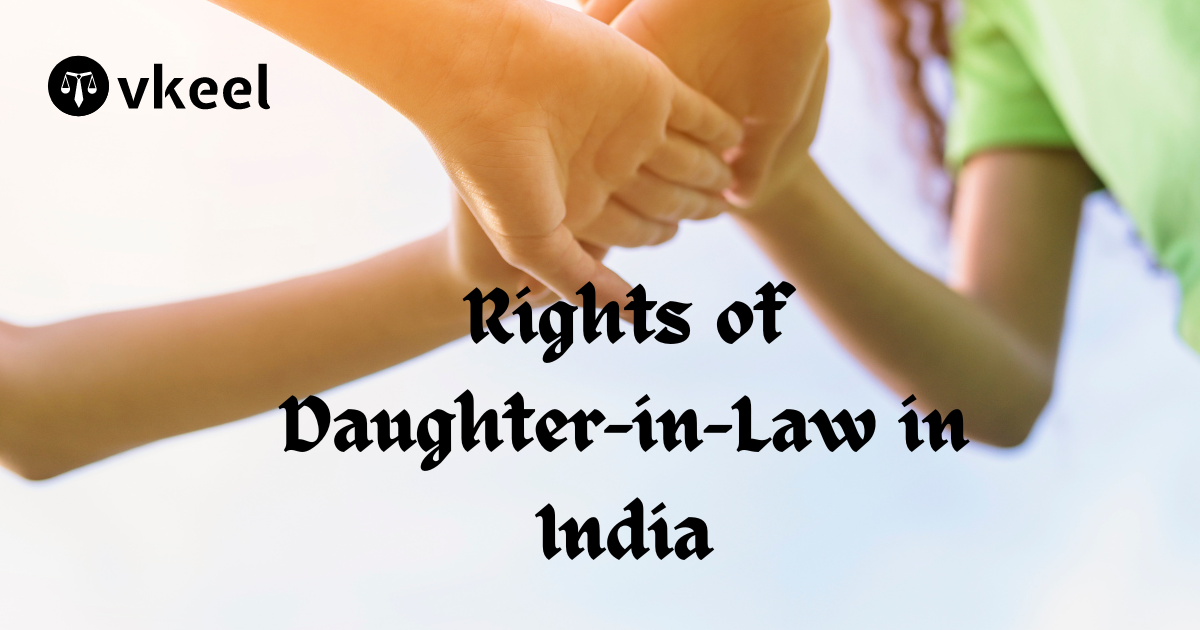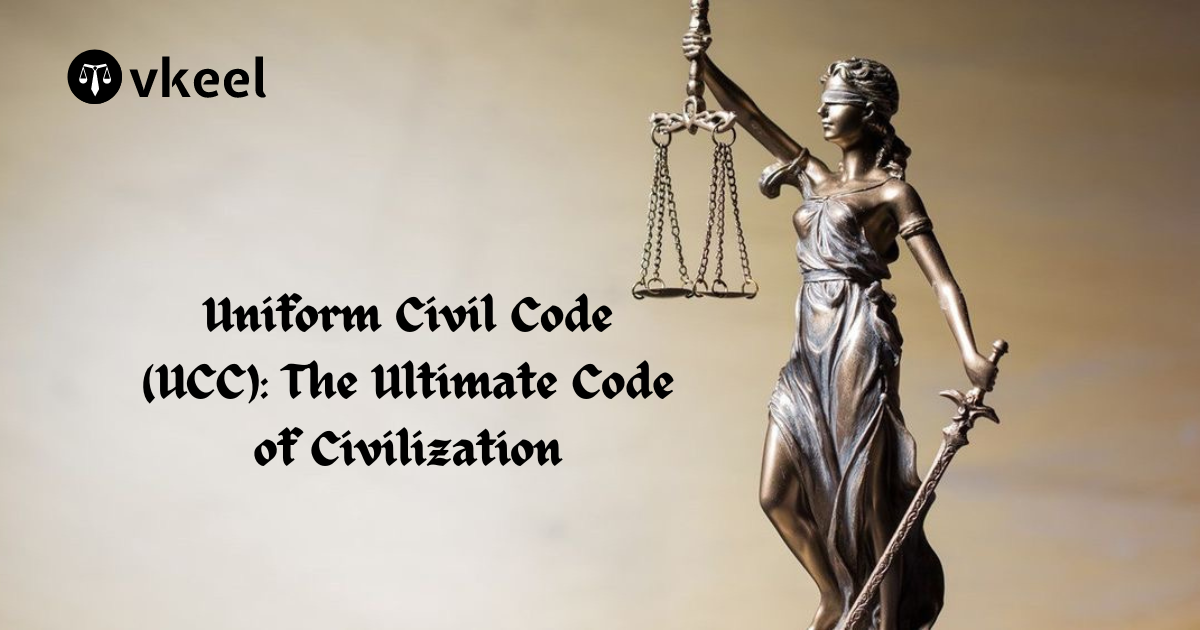Rights of Daughter-in-Law in India
By Himanshu Kumar
Table of Contents
Introduction
The status and rights of a daughter-in-law in India have evolved significantly over the years, influenced by societal changes, legal reforms, and landmark judicial pronouncements. Traditionally, the daughter-in-law was often perceived as having a subordinate role within the family, but contemporary legal frameworks aim to ensure her rights and protect her from discrimination and abuse.
Historically, the rights of daughters-in-law in India were largely dictated by traditional customs and societal norms that often placed them in subordinate roles within the joint family structure. Patriarchal norms governed family life, where the daughter-in-law was expected to adhere to the authority of her in-laws and fulfill domestic duties without much autonomy. Legal recognition and protection of her rights were minimal, with customary practices often outweighing formal legal provisions. This lack of legal backing often left daughters-in-law vulnerable to exploitation and abuse, with limited recourse to justice or support.
The modern legal framework protecting the rights of daughters-in-law began to take shape with the advent of progressive legislation and judicial activism. Key reforms include the Hindu Succession Act of 1956, which initially provided limited rights to women in inheritance, and its landmark amendment in 2005 that granted daughters equal rights in ancestral property. The Protection of Women from Domestic Violence Act, 2005, further reinforced the protection of daughters-in-law by ensuring their right to reside in a shared household and providing mechanisms to address domestic abuse. Judicial decisions over the years have increasingly recognized and expanded these rights, reflecting a shift towards gender equality and the empowerment of women within the family.
Legal Framework Protecting the Rights of Daughter-in-Law
Several laws in India provide a comprehensive framework to safeguard the rights of daughters-in-law. These include:
- The Hindu Succession Act, 1956
- The Protection of Women from Domestic Violence Act, 2005
- The Hindu Marriage Act, 1955
- The Indian Penal Code, 1860
The Hindu Succession Act, 1956
The Hindu Succession Act, 1956, is a crucial piece of legislation that governs the inheritance rights of Hindus. The Act was amended in 2005 to provide daughters, including daughters-in-law, equal rights in ancestral property.
Key Provisions and Amendments
- Equal Inheritance Rights (2005 Amendment):
The amendment of 2005 was a landmark reform that granted daughters equal rights as sons in ancestral property. This means that a daughter-in-law, through her husband, has a stake in her in-laws’ ancestral property. - Rights in Coparcenary Property:
A daughter, and by extension a daughter-in-law through her husband, is considered a coparcener in the ancestral property, giving her the right to demand partition and her share of the property.
Landmark Case Laws
- Vineeta Sharma v. Rakesh Sharma (2020):
The Supreme Court clarified that daughters have equal coparcenary rights in Hindu Undivided Family (HUF) property by birth, regardless of whether their father was alive on the date of the 2005 amendment. This ruling underscored the daughter’s equal rights in ancestral property. - Prakash v. Phulavati (2015):
Initially, the Supreme Court held that the 2005 amendment was prospective and did not apply if the coparcener had died before the amendment. This view was later overruled by the Vineeta Sharma case, expanding the rights of daughters.
The Protection of Women from Domestic Violence Act, 2005
The Protection of Women from Domestic Violence Act (PWDVA), 2005, is designed to protect women, including daughters-in-law, from domestic abuse and ensure their right to reside in a shared household.
Key Provisions
- Right to Reside in a Shared Household:
Section 17 of the PWDVA grants a woman the right to reside in the shared household, regardless of her ownership or title in the property. This ensures that a daughter-in-law cannot be arbitrarily evicted by her in-laws. - Protection Orders:
The Act provides for protection orders to prevent further domestic violence, ensuring the safety and well-being of the daughter-in-law. - Monetary Relief and Compensation:
Sections 20 and 22 of the Act empower the court to direct the respondent to provide monetary relief and compensation to the aggrieved woman, covering medical expenses, loss of earnings, and other damages.
Landmark Case Laws
- S.R. Batra v. Taruna Batra (2007):
The Supreme Court held that a daughter-in-law has a right to reside in the shared household, but this right is not absolute and is subject to the specific circumstances of each case. This case highlighted the complexities involved in determining the scope of a shared household. - Vinay Verma v. Kanika Pasricha (2020):
The Delhi High Court ruled that the daughter-in-law has the right to claim residence in the shared household even if the property is owned by her parents-in-law. This decision reinforced the protection of the daughter-in-law’s rights under the PWDVA.
The Hindu Marriage Act, 1955
The Hindu Marriage Act, 1955, governs marriage and divorce among Hindus and provides for the rights of a wife, including the daughter-in-law, in matters of maintenance and alimony.
Key Provisions
- Maintenance and Alimony:
Sections 24 and 25 of the Hindu Marriage Act allow a daughter-in-law to claim maintenance and alimony from her husband. This ensures financial support during and after the dissolution of marriage. - Restitution of Conjugal Rights:
Section 9 provides for the restitution of conjugal rights, allowing a wife to seek legal intervention if her husband withdraws from cohabitation without reasonable cause.
Landmark Case Laws
- Vinny Parmvir Parmar v. Parmvir Parmar (2011):
The Supreme Court emphasized that maintenance should be sufficient to ensure a lifestyle comparable to that enjoyed during the marriage, taking into account the husband’s income and standard of living. - Shyam Sundar v. Panna Lal (2014):
The court ruled that the wife’s right to maintenance is a continuous right, extending beyond the dissolution of marriage if she is unable to sustain herself.
The Indian Penal Code, 1860
The Indian Penal Code (IPC) includes provisions to address cruelty and harassment faced by a daughter-in-law within her marital home.
Key Provisions
- Section 498A:
This section criminalizes cruelty by the husband or his relatives towards the wife. Cruelty includes physical and mental harassment, particularly related to dowry demands. - Dowry Prohibition:
The Dowry Prohibition Act, 1961, supplemented by Section 498A of the IPC, aims to prevent the giving and receiving of dowry, protecting the daughter-in-law from dowry-related harassment.
Landmark Case Laws
- Arnesh Kumar v. State of Bihar (2014):
The Supreme Court issued guidelines to prevent the misuse of Section 498A, ensuring that arrests under this section are not made arbitrarily and without proper investigation. - Rajesh Sharma v. State of UP (2017):
The Supreme Court laid down guidelines to check the misuse of Section 498A, including the constitution of Family Welfare Committees to scrutinize complaints before making arrests. This decision aimed to balance the protection of daughters-in-law with the prevention of false accusations.
Conclusion
The legal rights of a daughter-in-law in India are protected by a robust framework of laws and judicial precedents. While traditional norms often placed daughters-in-law in vulnerable positions, contemporary legal reforms have significantly enhanced their rights and protections. Key legislations such as the Hindu Succession Act, the Protection of Women from Domestic Violence Act, the Hindu Marriage Act, and provisions of the Indian Penal Code collectively ensure that daughters-in-law are safeguarded against discrimination, abuse, and injustice.
The evolution of these rights, marked by significant amendments and landmark case laws, reflects India’s commitment to promoting gender equality and protecting women within the family structure. As societal attitudes continue to evolve, the legal system must adapt to ensure that the rights of daughters-in-law are upheld, promoting their dignity and well-being in every aspect of family life.
Disclaimer:
The information provided in the article is for general informational purposes only, and is not intended to constitute legal advice or to be relied upon as a substitute for legal advice. Furthermore, any information contained in the article is not guaranteed to be current, complete or accurate. If you require legal advice or representation, you should contact an attorney or law firm directly. We are not responsible for any damages resulting from any reliance on the content of this website.










